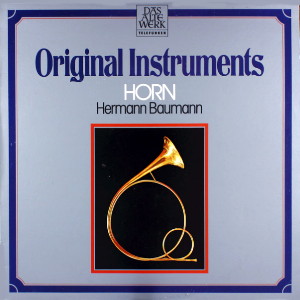 |
1 LP -
Telefunken 6.42321 AP (p) 1977
|
|
| ORIGINALINSTRUMENTE - Horn |
|
|
|
|
|
|
|
| Wolfgang Amadeus Mozart (1756-1791) |
Konzert
für Horn und Orchester Nr. 1
D-dur, KV 412 und 514 (386b) |
|
8' 45" |
|
|
-
(Allegro) |
4' 49" |
|
A1 |
|
-
Allegro (KV 514) |
3' 56" |
|
A2 |
| Wolfgang Amadeus
Mozart |
Quintett
für Horn, Violine, 2 Violen und
Violoncello Es-dur, KV 407 (386c) |
|
16' 24" |
|
|
-
Allegro |
6' 16" |
|
A3 |
|
-
Andante |
6' 12" |
|
A4 |
|
-
Allegro |
3' 56" |
|
A5 |
| Johann Sebastian
Bach (1685-1750) |
Aria
(Soprano) "Unsre Stärke heißt zu
schwach" - aus Kantate "Wär'
Gott nicht mit uns diese Zeit", BWV
14 |
|
4' 44" |
B1 |
| Johann
Sebastian Bach |
Coro
"Alles nun, das ihr wollet" -
aus Kantate "Ein ungefärbt Gemüte",
BWV 24 |
|
3' 55" |
B2 |
| Ludwig van Beethoven
(1770-1827) |
Quintett
Es-dur für Oboe, 3 Hörner in Es
und Fagott (Fragment) |
|
13' 53" |
|
|
-
(Allegro) |
7' 25" |
|
B3 |
|
-
Adagio maestoso |
4' 18" |
|
B4 |
|
-
Minuetto |
2' 10" |
|
B5 |
|
|
|
|
|
Hermann BAUMANN
|
- Inventionshorn,
böhmisches Instrument um 1800
(D-Bogen bei Mozart KV 412;
Es.Bogen bei Mozart KV 407)
|
- Naturhorn, Joh.
Adam Bauer, Prag um 1770 (aus der
Sammlung Dr. W. Aebi) (Bach BWV 14
und 24)
|
| - Inventionshorn
von Raoux, Paris 1819 (aus der
Sammlung Dr. W. Aebi) (Beethoven) |
| - Inventionshorn
von Raoux, Paris 1779; Kopie eines
Inventionshornes um 1800 von Gebr.
Alexander, Mainz (Beethoven) |
|
|
|
|
| Mozart (KV 412) / Bach
(BWV 14) |
Mozart (KV 407)
|
Bach (BWV 24)
|
Beethoven |
| CONCENTUS
MUSICUS WIEN |
Mitglieder
des QUARTETTO ESTERHÁZY |
LEONHARDT
CONSORT
|
Ad
Mater, Oboe |
Nikolaus
Harnoncourt, Leitung
|
-
Jaap Schröder, Violine |
Peter
Hinterreiter, Sopran |
Adrian
van Woudenberg, Horn |
|
-
Wiel Peeters, Viola |
Gustav
Leonhardt, Leitung
|
Werner
Meyendorf, Horn |
|
-
Wouter Möller, Violoncello |
|
Brian
Pollard, Fagott |
|
-
Wim ten Have, 2. Viola |
|
|
|
|
|
|
Luogo
e data di registrazione |
|
Bayerischer
Hof, Vienna (Austria) - novembre e
dicembre 1973 (Mozart, KV 412 und
514)
Amsterdam (Olanda) - gennaio &
aprile 1971 (Bach, BWV 14)
Casino Zögernitz, Vienna (Austria)
- giugno e ottobre 1972 (Bach, BWV
24)
Bennebroek (Olanda) - maggio 1969
(Beethoven)
|
|
|
Registrazione:
live / studio |
|
studio |
|
|
Recording
Supervision
|
|
-
|
|
|
Edizione LP |
|
TELEFUNKEN
- 6.42321 AP - (1 LP - durata 47'
41") - (p) 1977 - Analogico
|
|
|
Originale LP
|
|
TELEFUNKEN - SAWT
9627-A - (1 LP - durata 53' 30")
- (p) 1974 - Analogico (Mozart,
KV 412 und 514)
TELEFUNKEN - 6.42173 AW - (1 LP
- durata 30' 00") - (p) 1977 -
Analogico (Mozart, KV 407)
TELEFUNKEN - 6.35030 EX - (2
LP's - durata 47' 06" & 35'
54") - (p) 1972 - Analogico
(Bach, BWV 14)
TELEFUNKEN
- 6.35033 EX - (2 LP's -
durata 32' 33" & 32' 18")
- (p) 1973 - Analogico (Bach,
BWV 24)
TELEFUNKEN - SAWT 9547-A - (1
LP - durata 50' 03") - (p)
1969 - Analogico (Beethoven)
|
|
|
Prima Edizione CD |
|
TELDEC - 8.41272 ZK
- (1 CD - durata 53' 30") - (c)
1984 - AAD (Mozart, KV 412 und
514)
TELDEC -
8.35030 ZL - (2 CD's -
durata 47' 06" & 35'
54") - (c) 1985 - AAD (Bach,
BWV 14)
TELDEC -
8.35033 ZL - (2 CD's -
durata 32' 33" &
32' 18") - (c) 1985 -
AAD (Bach, BWV 24)
|
|
|
Note |
|
Long
playing compilation.
|
|
|
|
|
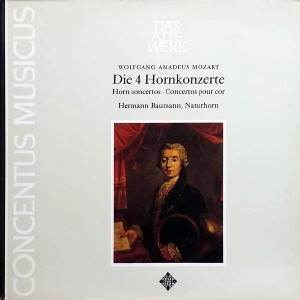 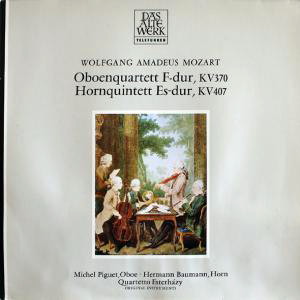 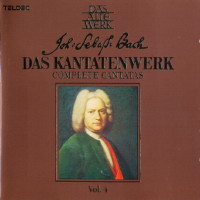 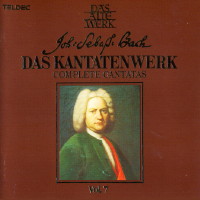 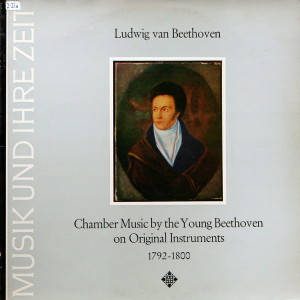 |
The action
of a certain
chamber musician
named Henrich
Stölzel from Pless
in Upper Silesia
in "attaching a
simple mechanism
to the French horn
in order to
perfect it,
whereby it
acquired all the
notes of the
chromatic scale in
a range of almost
three octaves,
harmonious, pure
and strong" was
justifiably
described in the
"Allgemeine
Musikalische
Zeitung" (general
musical journal)
of 1815 as a
pioneering
innovation in the
history of the
horn's
development. The
chronicler of that
time continued:
"All unnatural
tones, which
previously were
produced by
stopping the bell
with the right
hand, are
completely similar
to the natural
tones, and retain
the character of
the French horn".
Other instruments
also underwent a
development
process of this
kind. It offered
them, regardless
of whether the
instruments were
violins, oboes,
organs or pianos,
more tonal volume,
greater
"penetrating
power" and clearer
intonation.
However, it bought
this progress at
the expense of
those tonal values
which, on the
basis of more
precise knowledge
of original
instruments and of
performance
practice, we
desire today when
rendering the
music of earlier
epochs. The
reference to the
fact that the
unnatural tones of
the horn are in
the case of the
valve horn (the
new achievement)
"similar" to those
of the natural
tone scale,
indicates after
all the
discrepancy
between the two
kinds of horn.
Admittedly an
alternative
between the two
tonal types exists
only in our day,
since we are able
to distinguish
between the much
more difficult
manner of blowing
the natural horn
and the technique
of modern horn
playing,
alleviated by
means of valves.
The use of the
natural born is
usually associated
with signals (that
is to say, audible
signs, such as
post horn motifs);
in this respect,
the demands of the
motif signal can
be intensified to
the heights of
artistically set
musical passages.
The rediscovery
and intensive
cultivation of
baroque music in
our century made
one thing clear
works scored for
horns were, to a
large degree,
excluded from
representation in
the original,
authentic sense,
because only few
horn players
master the art of
"clarinblasen",
the 17th and 18th
century method of
virtuoso trumpet
playing which
produced the
highest harmonics.
among these is
without doubt
Hermann Baumann,
who demonstrates
with examples by
Mozart and Bach
that even the
pieces highest
pitches pose no
insuperable
difficulties which
arose from the
original
instruments with
unusual diapason
and from other
mouthpieces, which
un turn led to
their adjustment
and changes in
blowing
techniques. The
art of horn
playing today is
naturally no
longer hauged by
the extreme
demands made by
"clarinblasen" of
the baroque era.
In place of the
fanfare-like solo
passages, as the
examples from the
Bach cantatas
show, the horn is
given cantilenas
which, with soft
but nevertheless
emphatic tones,
fit more strongly
into the other
range of
instruments.
Finally the art of
"stopping", going
beyond the
criteria referred
to, became the
yardstick for
measuring
realisation of the
ideal of
cantabile, also in
the sector of horn
music.
Gerhard
Wenke
(English
translation by
Frederick A.
Bishop)
|
|
|
|

